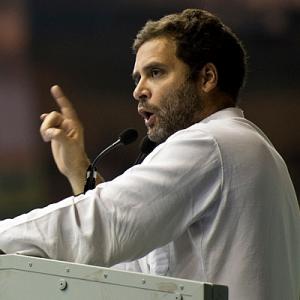
A draft of the country’s revised financial regulatory code has kicked up a lot of dust over the proposed changes to the role of the RBI as a regulator
The Financial Sector Legislative Reforms Commission was constituted by the previous United Progressive Alliance government in March 2011.
The commission was set up since it was felt there was a need to review the legal and institutional structures of the financial sector in India and recast these in tune with contemporary requirements.
The commission gave its first report in March 2013, which drew sharp criticism from the central bank, with Governor Raghuram Rajan calling some of the recommendations schizophrenic.
The finance ministry has put out a revised draft in public domain and invited comments from stakeholders.
The commission proposes a financial regulatory architecture featuring six agencies:
(a) Financial Authority;
(b) Reserve Bank of India;
(c) Financial Redress Agency;
(d) Resolution Corporation;
(e) Financial Stability and Development Council; and
(f) Public Debt Management Agency
The 10 big changes the revised draft of the Indian Financial Code proposes could change the functioning of the Indian financial sector
1. MONETARY POLICY
Now: The Reserve Bank of India, and within the central bank it is the governor who enjoys absolute power in deciding interest rate
Proposed: The committee approach to decide interest rate where government will appoint four members, while three will be from RBI
Impact: RBI loses its power to decide interest rate. If autonomy of RBI is compromised in the eye of investors, it could have serious implications
2. MANAGING GOVERNMENT’S DEBT
Now: The central bank -- investment banker for the government -- manages its debt
Proposed: An independent debt management agency to manage government’s borrowing
Impact: Conflict of interest issues are overblown on either side.
There will be some conflict whether RBI or government manages it. But an independent debt management agency, with external professionals from the beginning could turn out to be risky, as they will not have experience of managing government debt
3. STABILITY AND SYSTEMIC RISK
Now: The Financial Stability & Development Council, was set up in December 2010 to strengthen and institutionalise the mechanism for maintaining financial stability, and enhancing inter-regulatory coordination and promoting financial sector development.
The chairman of FSDC is the finance minister, with all the sectoral regulators as members. FSDC also focuses on financial literacy and financial inclusion
Proposed: FSDC to identify and monitor systemic risk. To take all required action to eliminate or mitigate systemic risk
Impact: In the US and UK, macro prudential regulation and supervision are a mandate of the central bank. Limiting the universe of systemic risk tools to three could be an area of concern, as more such risks could be evolving.
The central bank, being the monetary policy authority and the only lender of last resort, is the natural choice for being the systemic regulator
4. REGULATION OF BANKS/NBFCS
Now: RBI is the regulator for the banking system, as well as non-banking finance companies and primary dealers
Proposed: RBI continues to be the banking regulator and for systematically important payment systems but non-bank credit institutions will be regulated by the Financial Authority. The Financial Authority will also regulate all financial products
Impact: Could lead to fragmentation of regulation and give rise to regulatory arbitrage. There is a view that RBI should oversee non-bank financial entities like insurance and mutual fund companies due to their interconnectedness with the banking system
5. REGULATION OF ENTITIES IN THE PAYMENT SYSTEM
Now: RBI is the regulator of prepaid payment instruments and has laid regulatory norms for payments banks
Proposed: Only systematically important payments systems will be regulated by RBI
Impact: Many new players are emerging with rapid product innovations. The full impact of all these on financial stability and monetary policy are not clear. RBI, which is the regulator of the payment and settlement systems of the country, could lose some power to oversee this function
6. CONSUMER PROTECTION
Now: While RBI has an ombudsman and insists on banks treating their customers fairly, banks routinely flout norms and mis-sell products. The penalties levied by RBI on banks for violating norms related to mis-selling of financial products to consumers are the bare minimum
Proposed: A separate consumer agency is proposed to protect and promote the interests of consumers and promote public awareness of matters relating to financial products and services
Impact: A welcome step to protect consumer interest, as the regulator is unable to both regulate and solve disputes in a time-bound manner
7. CAPITAL CONTROL
Now: The present law under FEMA vests the power of capital account regulation with RBI.
In practice, the government and RBI consult before initiating a policy measure.
While the government takes decisions on various issues, like foreign direct investment, the notification is issued by the central bank
Proposed: The government will 'consult' RBI to make rules on capital controls (section 241).
This consultation will cover the problem to be addressed, the goal sought to be achieved and the alternatives available to address problems and achieve goals.
RBI will work as an administrator to implement rules.
The draft code empowers the government to prescribe rules to seek its nod for capital account transactions which affect national security
Impact: The present practice of both the government and RBI being involved in deciding capital control has served the country well, particularly during the global financial crisis and the Asian crisis.
The conduct of monetary policy will be weakened if capital control regulation is taken out from the central bank. Interestingly, the code is silent on the issue of financial stability
8. REGULATION OF MONEY MARKETS
Now: RBI regulates all these markets
Proposed: Separating regulation of such markets from RBI
Impact: In India, the exchange rate and interest rate are not fully market-determined. Due to the high fiscal deficit of the government, statutory liquidity ratio of banks are not going to come down in the near future.
Since volatile capital flows impact such markets, the central bank should have a role in regulating these markets
9. ADDRESSING OPACITY IN DECISION MAKING
Now: Current regulatory decision-making process lacks transparency
Proposed: The annual reports of RBI and the central government must give a complete disclosure and analysis of the performance of functions by the central government and RBI. They must include the total number of approvals granted, the applications rejected and the time taken for disposal of each application.
The FSDC must also publish in its annual report all significant trends identified in the financial system and an assessment of the stability and resilience of the financial system
Impact: These disclosures will bring about much-needed transparency and will reduce information asymmetry that currently plagues the system
10. ESTABLISHMENT OF A RESOLUTION CORPORATION
Now: There is no Resolution Corporation. The regulator has complete power over resolution of institutions
Proposed: The new code proposes to establish a Resolution Corporation to carry out resolution of certain types of financial institutions in distress. The corporation can take over the entity if it is classified in the category of critical risk.
It can also inspect an entity independently, if it opines that the regulator’s assessment of risk to viability of a covered service is incorrect
Impact: This is likely to speed up the process of resolution.
Currently, this process is time-consuming, as was seen in the case of the Madhavpura Merchantile Cooperative Bank.
This proposal is in line with similar institutions in other countries.
The image is used for representational purpose only. Photograph: Adnan Abidi/Reuters










